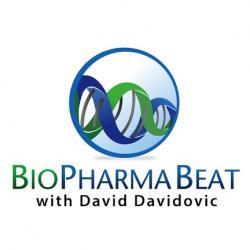

Essentially, the majority of these innovations do not address healthcare, or even wellness; instead they are very enticing tools – some would say toys or just fashion items – for those who are already highly motivated and perhaps obsessive about tracking and quantifying themselves (the ‘worried well”). Unfortunately, this is not the majority of the population and certainly is not the population with the greatest needs in areas such as diabetes, obesity or other factors or conditions.
I realize this sounds contrarian to all of the exuberance over digital health, so it’s important to emphasize the difference between these sensor-enabled wearables that are often touted, wrongly in my opinion, as great solutions for many of our health issues, and other digital innovations that are truly transforming diagnosis, treatment and possibly outcomes.
Knowing how many steps you took today or what your heart rate is at any moment is not healthcare!
A couple of years ago, the “wearables” around were essentially fancy pedometers either attached to your wrist or to your belt. At this year’s CES I saw products with sensors built into just about every item one could wear (see below). Almost all still focused on counting steps or general mobility, with newer sensors now reporting things like temperature, heart rate, brain and sleep activity; some going as far as reporting blood oxygen levels.
All these sensors, without context, have no relation to health priorities and outcomes.
One major problem with all these sensors is that they provide information without context. Just knowing a number at any point in time means very little. Some of the larger companies have gone a step further to develop algorithms, companion apps and more, but they still lack true context.
Sensors are being incorporated into every imaginable piece of clothing and jewelry. The question is the same, what is their true utility?
Here is a list, partial I am sure, of the items and form-factors that I saw at this week’s CES with some form of sensor:
Rings, necklaces, bracelets, earrings and all kinds of jewelry, shirts, shoes, shoe insoles, socks, aprons, hats, headbands, skates, dresses, eyewear, toothbrushes, gloves, ski bindings, belts, jackets, helmets, swim goggles, water bottles, cuffs, baby bottles, backpacks, suitcases, briefcases, socks, watch straps, mood rings, necklaces, pillows, mattresses, mattress pads, ankle bracelets, bicycle pedals and, wait, even dog collars!!
Can some forcasters actually be right saying that in the future everything we wear will have a sensor? I sure hope not.
What is most frustrating is to think of the money, time, motivation, brains and great enthusiasm that are going into developing and marketing these innovations that have little differentiation and limited value. Imagine if these resources could be diverted towards digital health innovations that have greater relevance and purpose?
Maybe this will happen. In the coming years, there will be huge consolidation in this area with many of these companies and products simply disappearing, with better understanding of trends vs. needs, and with events such as Apple’s HealthKit creating a new standardized ecosystem – though this in itself it could fuel a lot of junk (thing apps!),
Who will be the last sensor standing?